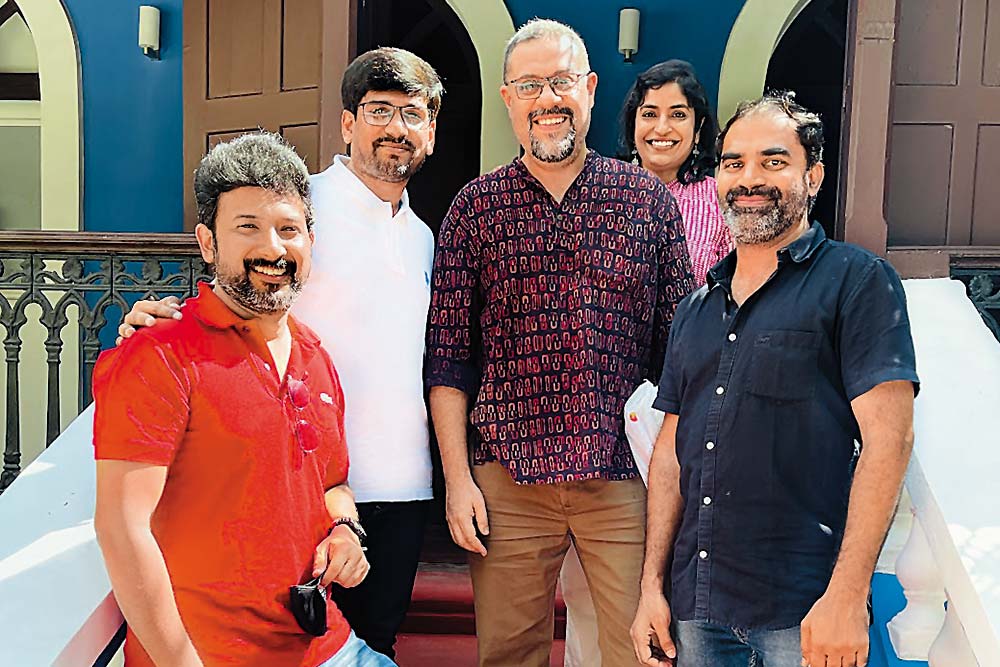Menaka Seetharaman (45) is a yoga teacher and a therapist. Her husband, Harjinder Singh Sidhu, runs a human resources (HR) consulting firm. The couple is secure in terms of their financial health, and Menaka recently bought her first home in Shimla.
Menaka, a former HR professional herself, says she never imagined she would be financially secure at such a young age and live her life on her own terms so effortlessly.
She says her journey towards financial freedom began 14 years ago, when she was in her early 30s. She was independent and single, and came from a family which had a rather conservative outlook in terms of money management.
Her family’s affinity to traditional investment avenues—fixed deposits, and keeping cash locked in bank accounts—made her risk-averse.
But she was keen to grow her wealth. It was during the global financial meltdown of the last decade, when she was introduced to Avinash Sarda, co-founder of the Hyderabad-based financial services firm Wealocity, who eventually helped her become financially independent by sorting her finances.
The Process
Sarda got insights into Menaka’s personal and professional goals, taking into account her risk appetite, and accordingly prepared a financial plan for her, with “detailed sheets of her income and expenses”.

Some of these goals included buying a house, children’s education, and her retirement. Menaka also listed her holidays and vacations as one of her priorities, adding that they should be “a part of the financial plan”.
But before he proceeded with the financial plan, Sarda ensured that Menaka had adequate life and health insurance covers, as that would keep the financial planning on track without denting the investment during any health emergency.
Sarda implemented an asset allocation strategy to add flexibility to Menaka’s financial plan, in order to make it responsive to changes over extended periods of time. To this effect, Sarda used the core and satellite portfolio strategy to enable tactical investment calls, while realigning the portfolio in accordance with the change in goals and income projections.
Impressed with the way Menaka’s portfolio was being managed, Sidhu also began taking Sarda’s assistance in managing his finances, and over the past 14 years, their joint portfolio has grown manifold.
However, it was not this smooth all along. Five years after Menaka ventured on the wealth creation path, she quit her job.
Says Sarda: “As a couple, they made several drastic life decisions. It was a surprise for us, indeed. But we swiftly swung into action to accommodate the changes in the portfolio to ensure there was a seamless transition from two incomes to one. While doing this, we ensured that their long-term goals, such as retirement, remained on track.”
Around 2019, Sidhu called it quits as the chief human resources officer from the multinational mining firm he was working with. Though the market was rewarding them, it called for a radical transformation as the inflows were reduced to zero.
Sarda again made the investments flexible. “Over a period of six months since Sidhu left his job, we made changes in their overall portfolio to adapt to this transformation with no inflows at all,” says Sarda.
That has paid off. Says Menaka: “The trust-based relationships over the years helped me gain confidence. Today, we are in a comfortable place with a view on how our savings and investments will keep us safe for our future needs 20 years down the line. It would not have been possible without proper planning.”
Lessons Learned
- Given the disruptions, Sarda gave primary importance to capital safety while making tactical changes to the asset allocation to ensure that the couple had clearly earmarked emergency corpus available.
- Sarda also took special care of systematic withdrawal of funds to meet the couple’s monthly expenses.
- “During the journey, we took advantage, wherever possible within their risk profile to generate the best possible risk-adjusted returns,” says Sarda.
- At present, nearly 35 per cent of the overall portfolio has been allocated to debt, gold and annuity, while 52 per cent of the portfolio is in diversified equity mutual funds, with the rest 13 per cent in real estate.
Avinash Sarda, Co-Founder, Wealocity
Disclaimer
The financial journey of Menaka Seetharaman and Harjinder Singh Sidhu is based on the “personal opinion and experience” of Avinash Sarda, co-founder, Wealocity, and should not be considered professional financial investment advice. No one should make any investment decision without first consulting their advisor and conducting research and due diligence.

